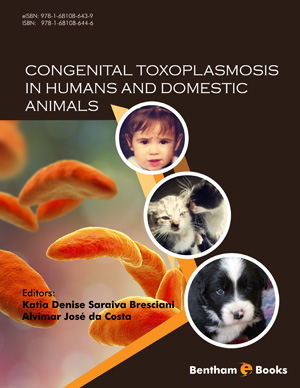Abstract
Toxoplasma gondii is a protozoan which commonly infects cats, dogs and humans, causing toxoplasmosis. This disease, of great importance in public health, is acquired by consumption of meat and by-products containing cysts, ingestion of food and/or water contaminated with oocysts, as well as through the placenta. Congenital Toxoplasma infections are reported in many species, being relevant in both medicine and veterinary medicine. In cats, congenital toxoplasmosis is associated with the occurrence of injuries in the liver, lungs, central nervous system and eyes, observed when hosts are infected in the middle to the last thirds of pregnancy. Ocular form can occur in young cats, infected through placenta, with no other clinical signs. The objective of this chapter is to describe the main manifestations of congenital toxoplasmosis in cats.
Keywords: Antibodies, Blindness, Chorioretinitis, Clinical signs, Diagnosis, Epidemiology, Feline, Immunity, Miscarriages, Newborn, Pathology, Pregnancy, Prevention, Prognosis, Queen, Stillbirths, Transmission, Treatment, Uveitis.






















